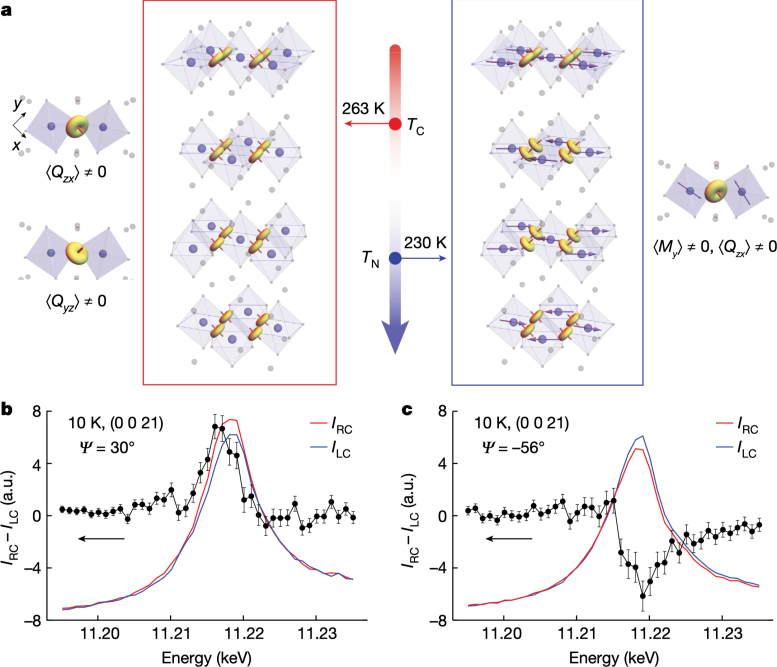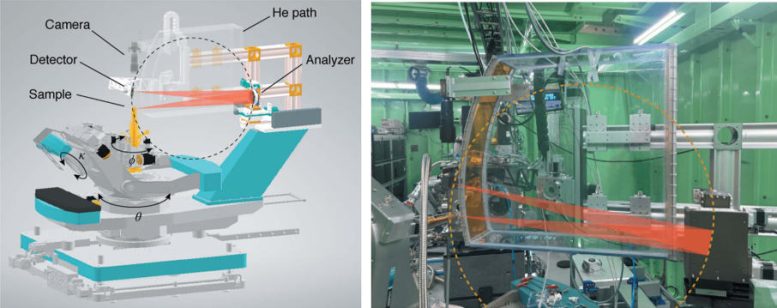South Korean researchers have made a groundbreaking discovery by directly observing spin quadrupoles in a spin-nematic phase using advanced x-ray and optical techniques. This achievement in studying Sr2IrO4 opens new possibilities in quantum computing and high-temperature superconductivity research.
The “spin-nematic phase,” a magnetic analog of liquid crystal, has been observed for the first time in a quantum spin system.
Liquid crystal represents a unique state of matter, combining characteristics of both liquids and solids. It possesses the ability to flow similarly to a liquid, yet its molecules maintain an alignment akin to that found in solids. The liquid crystal is widely used nowadays, for example, as a core element of LCD devices. The magnetic analog of this kind of material is dubbed the “spin-nematic phase”, where spin moments play the role of the molecules.
However, it has not yet been directly observed despite its prediction a half-century ago. The main challenge stems from the fact that most conventional experimental techniques are insensitive to spin quadrupoles, which are the defining features of this spin-nematic phase.
Breakthrough in Spin-Nematic Phase Observation
But now for the first time in the world, a team of researchers led by Professor Kim Bumjoon at the IBS Center for Artificial Low Dimensional Electronic Systems in South Korea succeeded at directly observing spin quadrupoles. This work was made possible through remarkable achievements over the last decades in synchrotron facility development.

Spin one-half moments on a square lattice. In addition to the classical antiferromagnetic order (classical AF), the spin moments can have various magnetic ground states, such as superposition of spin-singlet configurations (resonant valence bond; RVB) or antiferromagnet with large quantum fluctuations (quantum AF). In iridium oxide Sr2IrO4, spin quadrupole moments coexist with a canted antiferromagnet order. Credit: Institute for Basic Science
The IBS researchers focused their study on square-lattice iridium oxide Sr2IrO4, a material previously recognized for its antiferromagnetic dipolar order at low temperatures. This study newly discovered the coexistence of a spin quadrupolar order, which becomes observable through its interference with the magnetic order. This interference signal was detected by ‘circular-dichroic resonant x-ray diffraction’, an advanced x-ray technique employing a circularly polarized x-ray beam.
Advanced Techniques and Collaborations
Further verification of this discovery came through ‘polarization-resolved resonant inelastic x-ray scattering’, where the magnetic excitations were revealed to significantly deviate from the behaviors anticipated for those in

Dipole-quadrupole interference in circular dichroic resonant x-ray diffraction. (a) The spin quadrupole moments are formed at a higher temperature (263 K) than the magnetic moments (230 K). (b, c) At low temperatures, the interference between the spin quadrupole and the magnetic moments is manifested by circular dichroic resonant X-ray diffraction, a magnetic signal difference between left- and right-handed X-ray beams. Credit: Institute for Basic Science
conventional magnets. For the completion of these experiments, the researchers in South Korea have collaborated with Argonne National Laboratory in the US to construct a resonant inelastic x-ray scattering beamline in Pohang Accelerator Laboratory over the last four years.
Last but not least, the researchers used a series of optical techniques, including Raman spectroscopy and magneto-optical Kerr effect measurement, to show that the formation of the spin quadrupole moments occurs at higher temperatures than the magnetic order. Within this temperature range, the iridium oxide has only spin quadrupole moments but no magnetic order, realizing a spin-nematic phase.
Taken together, this is the first direct observation of the spin quadrupole moments in a spin-nematic phase.

(a, b) Drawing (a) and photograph (b) of the resonant inelastic x-ray scattering spectrometer installed at the 1C beamline of PLS-II. Credit: Institute for Basic Science
“This research was feasible because the infrastructure and capabilities of x-ray experiments in South Korea had reached a globally competitive level,” says Prof. Kim Bumjoon, corresponding author of this study.
“The discovery of the spin-nematic phase also holds significant implications for quantum computing and information technologies,” adds Prof. Cho Gil Young, a co-author of this study and professor at Pohang University of Science and Technology.
Another interesting aspect of the spin-nematic phase is its potential for high-temperature superconductivity. In the spin-nematic phase, the spins are highly entangled, which was suggested by physicist P. W. Anderson as a key ingredient for high-temperature superconductivity. Furthermore, given that iridium oxide Sr2IrO4 has been extensively studied because of its striking similarities with the copper-oxide high-temperature superconducting system, which fuels a growing interest in this material as a potentially new high-temperature superconducting system, as well as its relation to the spin-nematic phase.
Reference: “Quantum spin nematic phase in a square-lattice iridate” by Hoon Kim, Jin-Kwang Kim, Junyoung Kwon, Jimin Kim, Hyun-Woo J. Kim, Seunghyeok Ha, Kwangrae Kim, Wonjun Lee, Jonghwan Kim, Gil Young Cho, Hyeokjun Heo, Joonho Jang, C. J. Sahle, A. Longo, J. Strempfer, G. Fabbris, Y. Choi, D. Haskel, Jungho Kim, J. -W. Kim and B. J. Kim, 13 December 2023, Nature.
DOI: 10.1038/s41586-023-06829-4
The study was funded by the Institute for Basic Science.





